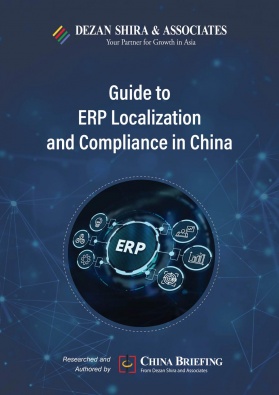Italy, China New DTA Effective 2025: Key Changes and Implications
Italy recently ratified the upgraded Double Tax Agreement (DTA), which will finally take effect in 2025. This agreement was signed in 2019 and was designed to reduce tax burdens, prevent tax evasion, and promote Italian investment in China. This upgraded DTA aligns with OECD standards, lowering withholding taxes on dividends, interest, and royalties, marking a new phase in Italy-China economic relations.
UPDATE (March 21, 2025): On March 20, 2025, China’s State Taxation Administration (STA) issued Announcement [2025] No.6, confirming the entry into force and implementation of the new Double Taxation Agreement between China and Italy.
According to the STA Announcement, the Agreement was formally signed in Rome on March 23, 2019, and both China and Italy have completed the necessary domestic legal procedures for its entry into force. The Agreement officially took effect on February 19, 2025.
Key dates for implementation include:
- The Agreement applies to taxes withheld at source on income derived on or after January 1, 2026.
- For other income taxes, it will apply to any tax period beginning on or after January 1, 2026.
On November 5, 2024, Italy’s Chamber of Deputies gave final approval to the ratification of the 2019 Double Tax Agreement (DTA) between Italy and China (hereinafter, referred to as the “new DTA”).
Set to take effect in 2025, the new DTA is aimed at eliminating double taxation on income, preventing tax evasion, and creating a more favorable environment for Italian businesses operating in China.
The ratification process, supported by the China-Italy Chamber of Commerce and Italian government institutions, reflects a strong commitment to strengthening bilateral trade and investment. The DTA’s provisions will facilitate profit repatriation and enhance investment planning for Italian companies in China, marking a milestone in Italy-China economic relations.
What are the financial implications of the new DTA ratification?
The ratification bill for the new DTA consists of four articles, with Article 3 detailing the financial provisions. Starting in 2025, the implementation costs of the agreement are estimated at €10.86 million (US$11.49 million) annually. These costs will be covered by a reduction in the special current expenditure fund allocated in the Italian Ministry of Economy’s 2024 budget, partially drawing from the reserve for the Italian Ministry of Foreign Affairs.
During the parliamentary debate, Deputy Foreign Minister Edmondo Cirielli emphasized the new DTA’s strategic importance, noting that the agreement redefines Italy’s economic and financial framework with China. Cirielli highlighted that the DTA not only strengthens relations with the Chinese government but also supports Italian businesses, which face increasing competition as other European countries have already established double taxation agreements with China. This ratification, therefore, is part of a broader series of diplomatic and economic engagements, leading up to a forthcoming visit by the President of the Italian Republic to China, underscoring Italy’s commitment to fostering bilateral relations and supporting its businesses in China’s complex market landscape.
What are the key changes in the new DTA?
The newly signed DTA between Italy and China, introduces several modernized provisions aligned with international tax frameworks. Replacing the 1986 DTA, the agreement adopts measures from the OECD/G20 Base Erosion and Profit Shifting (BEPS) Project and the OECD Multilateral Instrument (MLI), targeting tax avoidance and improving dispute resolution.
The Principal Purpose Test (PPT) clause, inspired by BEPS, is one of the central updates in the new DTA, working to prevent treaty abuse. This clause allows tax benefits to be denied if one of the primary purposes of a transaction or arrangement was to gain a tax advantage, a move to counter tax evasion through treaty-shopping.
The new DTA also adjusts withholding tax rates on dividends, interest, and royalties, making cross-border investments between Italy and China more attractive.
Dividends
Under the new DTA, a reduced withholding tax rate of 5 percent applies to dividends paid to shareholders who own at least 25 percent of a company’s share capital for a minimum one-year period.
This is a reduction from the previous 10 percent rate in the 1986 DTA, and it encourages Italian companies to receive dividend income from Chinese investments. The one-year holding period includes the payment day, with exemptions for ownership changes due to corporate reorganizations such as mergers or de-mergers.
Interest
Article 11 of the new DTA modifies the interest withholding tax structure. While the general withholding tax rate remains at 10 percent, an 8 percent preferential rate now applies to interest payments made to financial institutions in the other state, provided the interest is from loans that:
- Have a minimum maturity of three years; and
- Are used to finance investment projects, likely including infrastructure as part of the Belt and Road Initiative (BRI).
Additionally, the new DTA expands the list of entities exempt from interest tax. For instance, Italian institutions such as Cassa Depositi e Prestiti now qualify, along with certain debt securities known as Panda Bonds, whose income is directed to Chinese investors financing Italian subsidiaries in China.
Royalties
The agreement introduces a reduction in the effective tax rate on royalties associated with the use of industrial, commercial, or scientific equipment. The 1986 DTA imposed a 10 percent tax on 70 percent of the gross royalty amount (an effective 7 percent rate).
The new DTA applies the tax on just 50 percent of the gross amount, resulting in an effective 5 percent rate, which lowers the cost of cross-border technology and intellectual property transfers between the two countries.
Capital gains
Article 13 stipulates that capital gains from selling a qualified holding of at least 25 percent are taxable, provided this threshold was held anytime within the 12 months prior to the sale. The updated DTA simplifies capital gains taxation for other cases, specifying that capital gains not explicitly regulated in the treaty should only be taxed in the seller’s country of residence.
This replaces the concurrent taxation rule in the 1986 DTA and reduces the tax burden for cross-border investors.
These provisions reflect a strong commitment to modernizing tax rules, providing clarity and reducing costs for Italy-China cross-border investments. The updated DTA aims to foster a more predictable tax environment, driving economic cooperation, particularly in sectors like finance, infrastructure, and technology.
| Italy-China New DTA: | |||
| Provision | 1986 DTA | New DTA | Key Impact |
| Principal Purpose Test (PPT) | Not included | Included | Denies treaty benefits if transactions primarily aim for tax advantages, combating treaty abuse. |
| Dividends | 10% withholding tax | 5% withholding tax for shareholders owning ≥25% for ≥1 year | Encourages cross-border dividend income; exemptions for reorganizations (e.g., mergers). |
| Interest | 10% withholding tax | 10% general rate; 8% for loans ≥3 years funding investment projects | Supports infrastructure investments (e.g., Belt and Road Initiative). Expanded exemptions for certain entities and Panda Bonds. |
| Royalties | 10% on 70% of gross amount (effective 7%) | 10% on 50% of gross amount (effective 5%) | Reduces costs for technology and IP transfers, enhancing cross-border innovation. |
| Capital Gains | Concurrent taxation | Taxed in seller’s country unless specific provisions apply |
Simplifies taxation, reducing the burden for investors in most cases.Italy-China relations in 2024: Strategic recalibration and evolving partnerships. |
IN 2024, Italy-China relations experienced a strategic recalibration. Italy’s formal exit from China’s BRI marked a significant policy shift but one that didn’t derail economic ties. Italy’s withdrawal, completed in December 2023, signaled a reorientation of priorities that aligned Italy’s engagement with China more closely with high-value sectors and mutual economic benefits, rather than infrastructural projects often associated with the BRI. Despite this adjustment, Italy and China have successfully maintained strong bilateral r elations. High-level visits and fresh agreements have underscored the sustained partnership, with Italy emphasizing that its exit from the BRI should not be seen as a disengagement but rather a step towards a more balanced and diversified relationship.
The past year has been pivotal in fostering Italy’s pursuit of trade equilibrium. Italy’s exports to China have risen, particularly in sectors like pharmaceuticals, fashion, and automotive products, reflecting China’s continued demand for high-quality Italian goods. In contrast, Chinese investments in Italy, while more selective, have remained impactful, particularly in strategic industries like logistics. This is highlighted by COSCO’s acquisition of the Italian logistics company Trasgo in early 2024, signaling a continued Chinese interest in Italy’s role as a logistics hub in the Mediterranean.
Prime Minister Giorgia Meloni’s July 2024 visit to Beijing underscored Italy’s strategy to enhance its trade and investment footprint in China. During this visit, six new agreements were finalized, covering critical sectors like electric mobility and renewable energy. These accords aimed to address the trade imbalance and strengthen Italian presence in China’s expanding consumer markets. The discussions also focused on digital innovation and cultural diplomacy.
Italian President Sergio Mattarella also visited China from November 7 to 12, 2024, marked a pivotal moment in bilateral relations between the two countries. During this visit, which included key meetings with Chinese President Xi Jinping and Premier Li Qiang, both countries expressed a shared commitment to strengthening economic ties. In addition to economic dialogue, Mattarella’s visit underscored cultural and academic exchanges. The two nations commemorated their historical ties, with references to Marco Polo and the ancient Silk Road, symbolizing their enduring East-West connection. At the China-Italy Cultural Cooperation Mechanism Conference, cultural agreements were signed to strengthen educational collaboration, promote translation initiatives, and explore digital innovation in cinema and live entertainment.
In the same occasion, Italian Deputy Prime Minister and Foreign Minister Antonio Tajani signed three major agreements to foster educational exchanges, launch a new Executive Programme of Cultural Cooperation, and commemorate the 700th anniversary of Marco Polo’s death. This alignment between Italy’s deep cultural roots and China’s rich heritage provides a platform for both countries to promote unity, mutual respect, and cross-cultural learning.
Economically, Italy remains one of China’s major European trading partners, with trade between the two countries surging by 50 percent since 2019. Italian exports in fashion, pharmaceuticals, and luxury goods have fueled this growth, driven by China’s robust middle class. Nonetheless, the countries face an ongoing trade imbalance, with Chinese goods—such as electronics and machinery—dominating Italy’s imports. Italy’s increased focus on exports, digital innovation, and targeted Chinese investments are steps toward achieving a more equitable trade flow.
Looking forward, Italy-China relations in 2024 reflect a strategic pivot away from the large-scale infrastructure projects typical of the BRI toward diversified, targeted engagements that cater to both countries’ evolving economic and cultural priorities. Italy’s commitment to maintaining a balanced relationship with China underscores the enduring importance of their partnership, even as Italy also expands its economic relationships in the Indo-Pacific region.
This recalibrated relationship serves as a model for EU-China engagement, one built on mutual respect, sectoral expertise, and forward-looking cultural diplomacy.
Also Read:
China and Italy New Double Taxation Agreement to be Effective in 2025
China and Italy to ‘Relaunch’ Bilateral Ties: Trade and Investment Outlook
(The article was first published on November 15, 2024, and was last updated on March 21, 2025)
About Us
China Briefing is one of five regional Asia Briefing publications, supported by Dezan Shira & Associates. For a complimentary subscription to China Briefing’s content products, please click here.
Dezan Shira & Associates assists foreign investors into China and has done so since 1992 through offices in Beijing, Tianjin, Dalian, Qingdao, Shanghai, Hangzhou, Ningbo, Suzhou, Guangzhou, Haikou, Zhongshan, Shenzhen, and Hong Kong. We also have offices in Vietnam, Indonesia, Singapore, United States, Germany, Italy, India, and Dubai (UAE) and partner firms assisting foreign investors in The Philippines, Malaysia, Thailand, Bangladesh, and Australia. For assistance in China, please contact the firm at china@dezshira.com or visit our website at www.dezshira.com.
- Previous Article What are Company Health Checks, and Why Do Foreign Companies in China Need one in 2025?
- Next Article China Annual IIT Reconciliation in 2025: Everything You Need to Know








